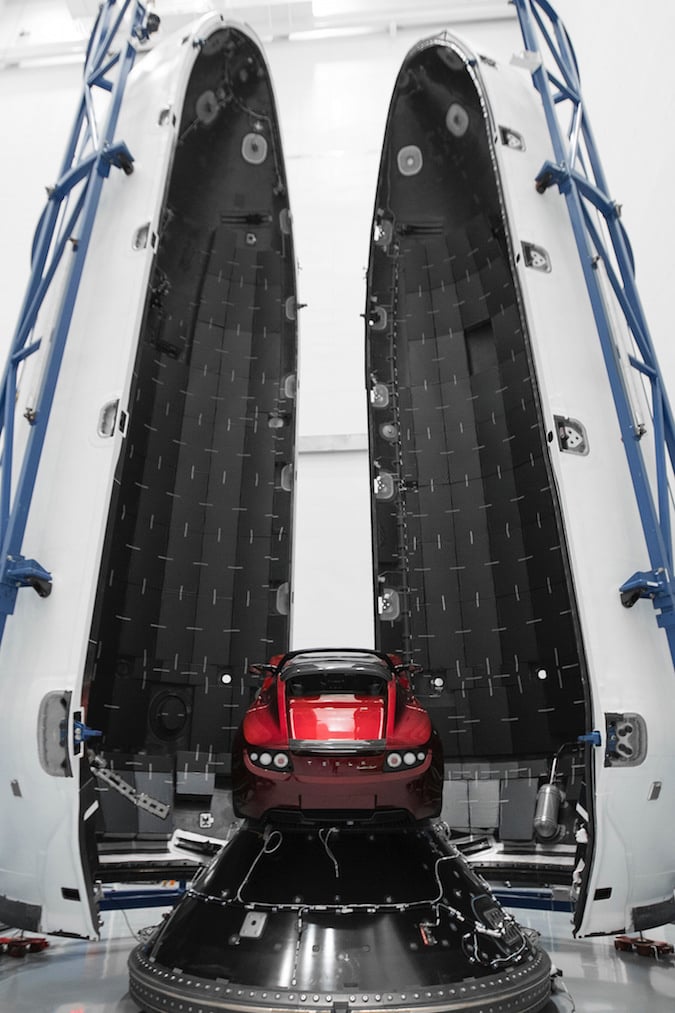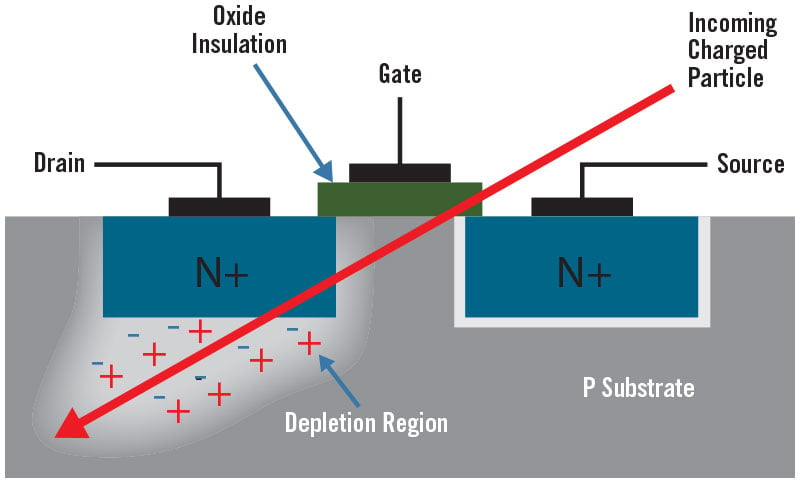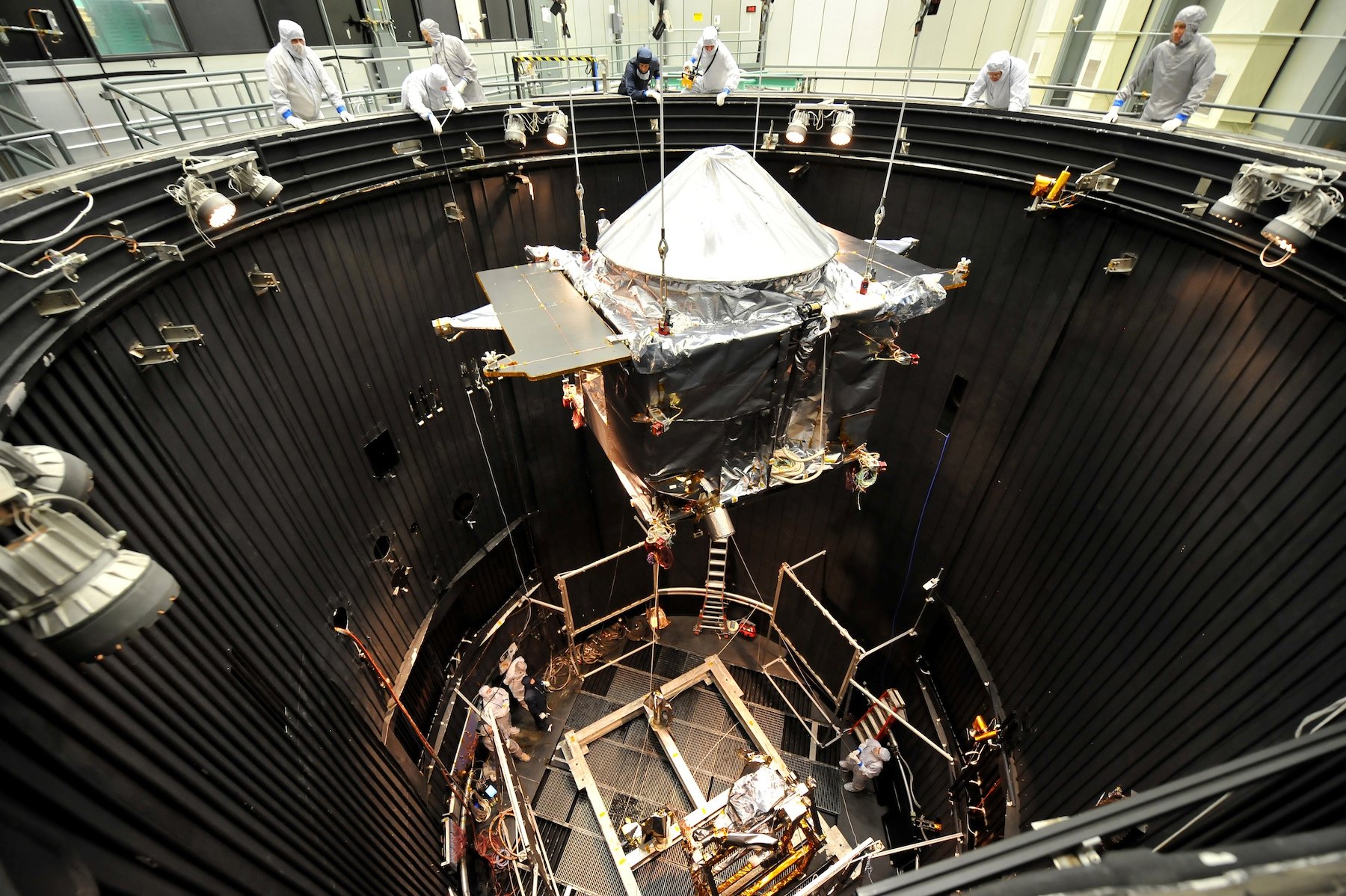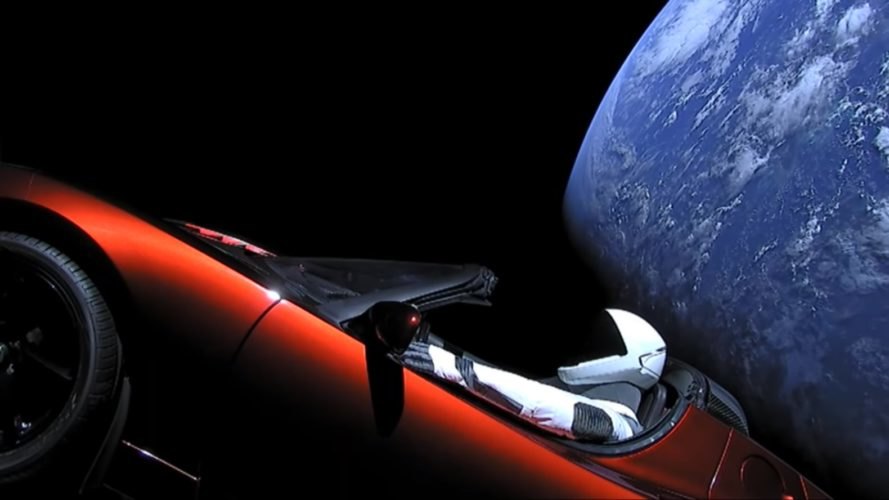SpaceX made history when the
company launched its Falcon Heavy rocket on February 6th, carrying Elon
Musk’s Tesla Roadster as the payload.
If the payload, itself, wasn’t quirky enough, the company also fitted a mannequin wearing a SpaceX spacesuit with one hand on the wheel, the other casually resting out the driver side window. He has been dubbed "Starman".
Keeping Starman company is the message “DON’T PANIC” displayed on the dash screen—a homage to Douglas Adam’s Hitchhiker's Guide to the Galaxy series. After being launched, a live feed showed Starman drifting with Earth in view, with David Bowie’s “Life on Mars” played in the background.
The payload was an alternative to other dummy payloads for test flights of rockets—typically concrete blocks are used just in case the rocket explodes. Once the Tesla was in orbit, it spent several hours in the Van Allen radiation belt, then did a final burn where it now heads towards the asteroid belt. It will remain there for a very, very long time.
It is probably unlikely the car was launched with its full suite of electronics on board.
But, just for fun—and for a better understanding of the difficulties of designing hardware that can survive in space—let’s take a look at what would happen if a fully outfitted, typical Tesla Roadster were sent into space.

Elon Musk's Tesla Roadster being prepared for launch. Image courtesy of SpaceX.
Charging and Radiation
For space hardware, specialized manufacturing, design, and testing processes are applied so that electronic components are more resilient to the space environment where radiation can cause havoc on electronic systems. However, all of these extra design requirements usually mean that approved space hardware is a few generations behind its latest terrestrial counterparts.This is part of why you may hear about spacecraft being launched or operating with less computing power than the latest smartphone. Since Teslas are built with some of the latest and greatest technology to support assisted driving, it's a good bet that Starman's ride is not fitted with rad hard components.
Some space environments are also worse than others. In Low Earth Orbit, there is still some shielding by the Earth’s magnetic field. By comparison, in interstellar space, there is an abundance of galactic and cosmic radiation.
Impacts on electronics in space can be broadly arranged in two categories: charging and radiation hazards.
Charging
With charging, a buildup of charge can occur on the surface of a spacecraft (in this case, a Tesla Roadster) or in its interior. If too much of a charge is built up, a discharge can happen either on the surface of the spacecraft (an event known as “flashover”), from the surface to the interior of the spacecraft (“punch-through”), or from the spacecraft to the space environment (“discharge to space”).The result could disrupt electronic functions, damage electronic components, or damage some other part of the spacecraft.
Radiation
Radiation hazards occur when, you guessed it, radiation comes in contact with electronics. The Van Allen belt is the region where protons and electrons are trapped in a region around Earth. It’s a dynamic environment so it ebbs and flows with the solar weather, with high electron activity during flares, and high proton activity otherwise.Beyond this, solar cosmic rays from the son emit solar energetic particles consisting of protons, electrons, alpha particles, and some heavy ions. Heavy ions can cause considerable damage during solar fluxes.
Galactic cosmic rays are powerful and particularly damaging to electronics. Heavy nuclei, protons, and alpha particles can penetrate deep into electronic components.
The Tesla Roadster will be exposed to all of these phenomena—in the Van Allen radiation will ionize electronics and eventually degrade components, and other radiation can cause single event upsets, single event latches, or single event burnouts where logic in a device is temporarily changed, permanently changed, or completely destroyed.

Single Event Upset. Image courtesy of COTS Journal Online.
Outgassing
Outgassing is a phenomenon that occurs to materials in the vacuum of space—the lack of pressure causes it to deteriorate and release into molecules that can end up coating electronics—or the materials break down and become unusable. Most plastics will outgas and a great deal of effort is put into identifying low-outgassing materials for use in space.
TVAC chamber testing which can test outgassing. Image courtesy of LASP-University of Colorado, Boulder.
The Tesla Roadster has a carbon fiber body and tires that are likely made out of a combination of synthetic rubber, natural rubber, fabric, and carbon black. The carbon fiber would have required special treatment and coating to be suitable for space applications, although any epoxy used on the vehicle would probably outgas. As for the rubber tires, those will likely outgas and degrade in space.
Micrometeorites
And, of course, while space is mostly empty, there are still opportunities for micrometeorites to cause damage. One well-known space vehicle that has been subjected to quite a bit of damage due to micrometeorites is the International Space Station (ISS). The ISS is composed of modules connected together, and the ones in which humans occupy are covered in Kevlar, an ultra-strong synthetic material used in bullet-proof vests.It is unlikely the Tesla Roadster has such a coating, so a bad run-in with some asteroid dust could add some holes to it. Also, if the Roadster’s lithium-ion batteries are still on board, micrometeorite impacts could cause them to explode.

View of Starman and Earth from the SpaceX live feed. Image courtesy of SpaceX.
By the time Starman and his Roadster passes by Mars, it may be stranded without working electronics, deteriorated tires, a damaged outer body, and maybe even some scorch marks from a battery explosion.
Looking at how well Musk's Roadster will fare in space gives us an interesting insight into how actual spacecraft must be painstakingly designed to protect their electronics.
Launching an electric vehicle into space may seem a little eccentric—but it's still pretty cool.








No comments:
Post a Comment